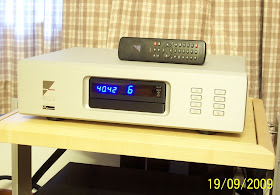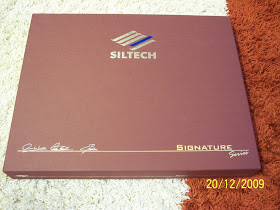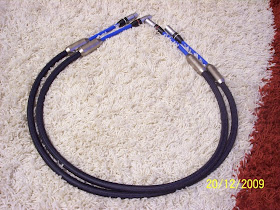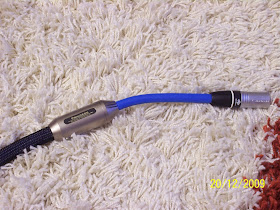I thought of writing some sort of a wrap-up for the things that came through my place throughout the year. I'll start with the digital source, as it is somehow the category with the most number of items. I counted 8 disc spinners including a transport+DAC combo. I do not purport this article to be a 'shoot-out' kind of thing, but instead intend it to be more of a comparison. I do not judge good or bad as I believe each one has its place and it is how much a particular player complements your personal listening preference and your system's balance - you pick your own poison.
The players are sorted by price, I then attempt to choose one word that best characterize each, which is followed with a short derscription of the player's performance, as heard in my system's context. Here goes:
1. Stello CDT100 cd trnasport and DA100 Signature DAC (RM6.6k nett/pair) - ROBUST

The Stello pair offers the best value for money among the lot. The sound is robust, it is not one of those soft and gentle kind. They have an enthusiasm in music making and as such convey the musical message very well. The mids are its best area, they have real presence, being projected slightly ahead of the rest of the mix.
Connect them via their i2s link, otherwise, I don't think you are listening to the best that they can do. The versatile DAC accepts multiple inputs including USB for computer audio, so your investment is future-proof.
2. Bryston BCD-1 (RM11,900 list) - NEUTRAL
 This Bryston BCD-1 goes about doing its job in a very even-keel manner. It is not euphonic/sweet, nor was it hard hitting/aggressive. You won't call it refined, but it is not rough either. It is just a excellently competent machine going about presenting the information on the cd as it is, and that is saying a lot. Its approach is "the whole truth, and nothing but the truth". It produces excellent details, with well balanced frequency ranges.
This Bryston BCD-1 goes about doing its job in a very even-keel manner. It is not euphonic/sweet, nor was it hard hitting/aggressive. You won't call it refined, but it is not rough either. It is just a excellently competent machine going about presenting the information on the cd as it is, and that is saying a lot. Its approach is "the whole truth, and nothing but the truth". It produces excellent details, with well balanced frequency ranges.3. Ayre CX-7eMP (RM15,300 list) - CORRECT

The Ayre simply sounded correct with any cd played. You would think that the sound coming out from this Ayre would be how music actually sound like, and that is what pushes my buttons. Personally, I like this player a lot.
The CX-7eMP also had the knack of holding the music line all the way down to nothingness, an impressive machine that conveys each music phrase in its entirety.
4. E.A.R. Yoshino Acute (RM16,800 list) - MUSICAL

The E.A.R. Yoshino, like the other two tubed players in this survey, had music in its heart. It sounded supremely musical, always. Others may impress by sounding bigger or more dynamic but the Acute let you enjoy all your music. It is one of those rare players that let me slip in a disc, switch off my 'analyze' mode and straight go into 'listning enjoyment'.
5. Esoteric SA-50 (circa 20k list) - REFINED

A player that has so many features that even the kitchen sink is thrown in for good measure :-). Excellent built, flawless operations.
Sound is ultra refined, smooth and cultured. If you have an aggressive beast of a system to tame, the Esoteric will be your soother. A player that says its owner has a taste for the finer things in life. Also plays SACD (stereo only).
6. Ayre C-5xeMP (RM26,100 list) - CORRECT

Well, I can't think of a different word from the CX-7eMP. The C-5xeMP has that correctness thingy as its younger sibling. The senior model went slightly ahead though in terms of dynamics and pace, music also has a more rhythmic quality via the C-5xeMP.
My current resident player. Also plays SACD and DVD (sound only)
7. Pathos Endorphin (RM32,000 list) - FLOW-y
 This is an imposing piece of gear, easily the one that takes up the most rack space. Want to add some Italian design chic to your system? Get the Endorphin.
This is an imposing piece of gear, easily the one that takes up the most rack space. Want to add some Italian design chic to your system? Get the Endorphin.Another tubed player that will just let you enjoy your music collection. This one has a certain swinging, rollicking feel to it. Music flows really well. It will make you sway along with the music, quite addictive. The sound is also smooth and easy on the ears.
8. Metronome CD One T Signature (RM46,920 list) - BEAUTIFUL
 Beatiful both in build and in sound. The sound quality is no doubt high-end - clear, polished, elegant. Sheer beauty!
Beatiful both in build and in sound. The sound quality is no doubt high-end - clear, polished, elegant. Sheer beauty!This tubed player is also highly musical, rubbish in the CDs is held at the gate and only the music is let through. A player that you can listen to for long hours without even a hint of boredom. Let me say it again - this is real High-End.
I missed a few others, including the Bladelius Embla and Esoteric X03-SE.
HAPPY NEW YEAR to all. Hope in 2010, everyone gets the best sound from your system and, more importantly, enjoy more music!















































